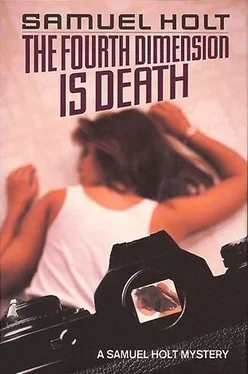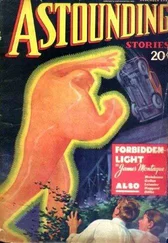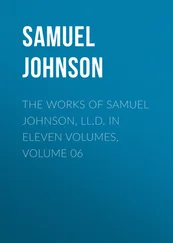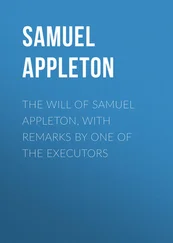I did so, both of them watching me alertly, and brought both back to LaMarca. “Use the drum table here,” I told her. “Print a capital H.”
She looked at me, at Feeney, at the paper. She shrugged and printed a capital H.
“Good,” I said. “Do it again.”
“I don’t see the point,” she told me, “but all right.”
She started to print another capital H. She drew two of the three lines of the letter, and I said, “Stop!” putting my hand on the paper to keep her from drawing the third. Then I took my hand away and said, “Take a look at it. That’s how you print an H.”
They looked at the two vertical lines. They looked at one another. Feeney looked at the photo.
I said, “Everybody who prints a capital H does the two vertical lines first and then connects them with the crossbar. But the name ‘Sam’ followed by two vertical lines wouldn’t establish the accusation clearly enough. The killer wanted to be sure he’d made his point. Not an entire capital H, just enough to show that’s what was intended. The last wonderful milligram of melodrama. So now you know something about the killer. He’s an artiste.”
“Just a minute,” LaMarca said. “You had lunch with your lawyer yesterday in the Oyster Bar at Grand Central, and left him a little before two. You didn’t get home until nearly three. Where were you in that hour?”
“That’s when she was killed, huh? I walked home. I usually do in New York, in good weather.”
Feeney said, “Aren’t you kind of well-known to just walk around the—”
“No,” I told him, and plucked the photo out of his hand and showed it to him. “Whatsername didn’t write this,” I told him. “The murdered girl. She didn’t write it. If you come up with a reason why I would have written it, let me know.” I dropped the photo back in his lap and he slapped at it to keep it from falling to the floor. “In the meantime,” I told them both, “I’m busy.”
And I turned my back on them and walked to the door.
“We have more questions, Mr. Holt,” LaMarca said.
I looked at her cold-schoolteacher face. “Screw you,” I said, and went upstairs to unpack. When Robinson called me for lunch a little later, they were gone.
It isn’t smart to say screw you to a pair of cops, no matter how much they irritate you, a fact I knew (from both sides of the equation) and of which Mort gloomily reminded me when I phoned him after lunch. I called because my irritation had departed, leaving nervousness, which Mort did little to ease. “I could have preferred, Sam,” his voice said slowly and plaintively in my ear, “if you had chosen some other phraseology to express your discontent.”
“So could I,” I told him, “but they were being so deliberately obtuse, and—”
“Never,” he interrupted, “accuse anyone of being stupid on purpose. Some people do it quite automatically and naturally.”
“I’m not sure about those two,” I said, thinking about Feeney and LaMarca, unable to make up my mind about them. “But they were definitely just going through the routine they’d worked out ahead of time, regardless of what might happen.”
“Twitting the celebrity, perhaps? Letting him know he gets no special treatment?”
“Maybe, I don’t know. Anyway, I’d just had the long drive in from the Island, and I just didn’t feel like putting up with them.”
“Which you let them know.”
“Which I let them know. And now, I guess, the question is, what can they do about it?”
“Well, they can’t arrest you for the murder of Kim Peyser, we know that much,” he said. (The murder itself, without the fakery about my name or my being connected with it in any way, had made this morning’s papers, so Mort had already known about it when I phoned.) “But they can of course try to make life difficult in other ways,” he went on. “What’s your relationship generally with the officers in the precinct?”
“Slim but friendly,” I told him. “I appeared at a PAL benefit for them six years ago when PACKARD was still on. Not much since. And these two are Homicide South, not precinct.”
“I understand that. I was hoping you might have a champion somewhere in the force.”
“Sorry,” I said, meaning it.
He sighed. I hate it when Mort sighs. “Let me make some phone calls,” he said, “see how bad the damage is, and what we can do to repair it.”
“Thank you, Mort,” I said humbly.
“I’ll call you back,” he promised, and I said, “I’ll be here.”
For the next half hour, I merely roamed the house, waiting uselessly for the phone to ring. I sat at my desk, but there was nothing to do there but look out the window at West 10th Street and think about the death on that pavement of Dale Wormley. The dumpster from which the murder weapon had probably come was just visible down to the right, toward 5th Avenue.
I couldn’t read. I looked at my cassettes, and there was nothing I wanted to watch. The idea of undressing and going down to the lap pool was no good; I wanted to be here, ready, when Mort phoned back.
Finally I found myself again at my desk, this time with the phone book open, looking for Julie Kaplan. There were no Julies listed, but there were four J s; she would probably be one of them.
It was this not knowing anything that had eventually worn me down. Why was Kim Peyser killed? Was it connected to the murder of Dale Wormley? Where had it happened? Why did the killer make that rough and stupid attempt to put the blame on me?
Julie Kaplan was my only entree to that world, whatever world it was in which Dale Wormley and Kim Peyser had moved. She would know where her friend had been killed. She might even have an idea who had done it, who would think it a good plan to borrow her own suggestion that I was a murderer. That was what pushed me to act, plus the fact that the phone wasn’t ringing, which meant I was stuck here with nothing to do but think. All of that is why I picked up the phone on my desk and started calling J. Kaplans.
The first was an answering machine, a nasal-voiced woman who was not the right one. The second was a suspicious older man. And the third was Dale Wormley:
“Hi,” said the voice, in pleasanter tones than I’d ever heard from him in life. “You’ve caught Dale Wormley’s smart answering machine here.” (Of course! Julie Kaplan had shared Wormley’s apartment until three weeks ago, and would naturally have her own listing.) “I’m really sorry I can’t be present to take your call, but you go ahead and tell this friendly machine whatever you want and I’ll sure get back to you. In the meantime, have a nice day, y’hear?”
The studied folksiness of it grated, but under the circumstances I also found myself feeling sorry for the poor son of a bitch. He had simply been trying to make some sort of statement, trying to rise up out of the crowd, be noticed. That’s what his life had been about, after all; that’s what all actors’ lives are about.
And that’s where he and I were linked, however reluctant I was to admit it. I possessed something Dale Wormley had wanted, and this answering machine message of his made it clear: I was, through no fault of my own, someone. He had been, regardless of his efforts, no one. His message, by being neither sincere nor professional, had shown the hopelessness of his try.
I left no message.
Kim Peyser was in the phone book under her full name, with an address on West 74th Street. I called, and listened to another voice from beyond the grave: “Hi. Kim here. Or not here, you know what I mean. When you hear the beep, leave a message. See you later.”
A cheerful, youthful, innocent voice. She shouldn’t have been killed, I thought, while in those same few seconds I was also deciding whether or not this time to leave a message. Had Kim Peyser been killed right there, in the apartment she shared with Julie Kaplan? If she had, would Julie Kaplan continue to stay there? I think it was just the need I felt to do something that decided me: “Julie,” I said, after the beep, “if you’re still there, this is Sam, uh, Sam.” At the last second, it had occurred to me I had no way to tell who’d be listening to this machine, and I didn’t want to identify myself too closely. Julie Kaplan would recognize the voice and know who it was. I left one of my numbers — the general one, used in the less personal part of my life — and hung up. And then, once again, I had nothing to do.
Читать дальше












